Matt Baker knew life was short, his in particular. Some of his closer friends surmised that this keen awareness of his own mortality is why he often burned the candle at both ends, cramming as much living into whatever time was allotted him. A childhood bout of rheumatic fever compromised his heart, which kept him out of the Army for World War II, but didn’t stop him from smoking, traveling to Mexico, cavorting with a variety of lady friends, or cruising around in a canary yellow Cadillac.
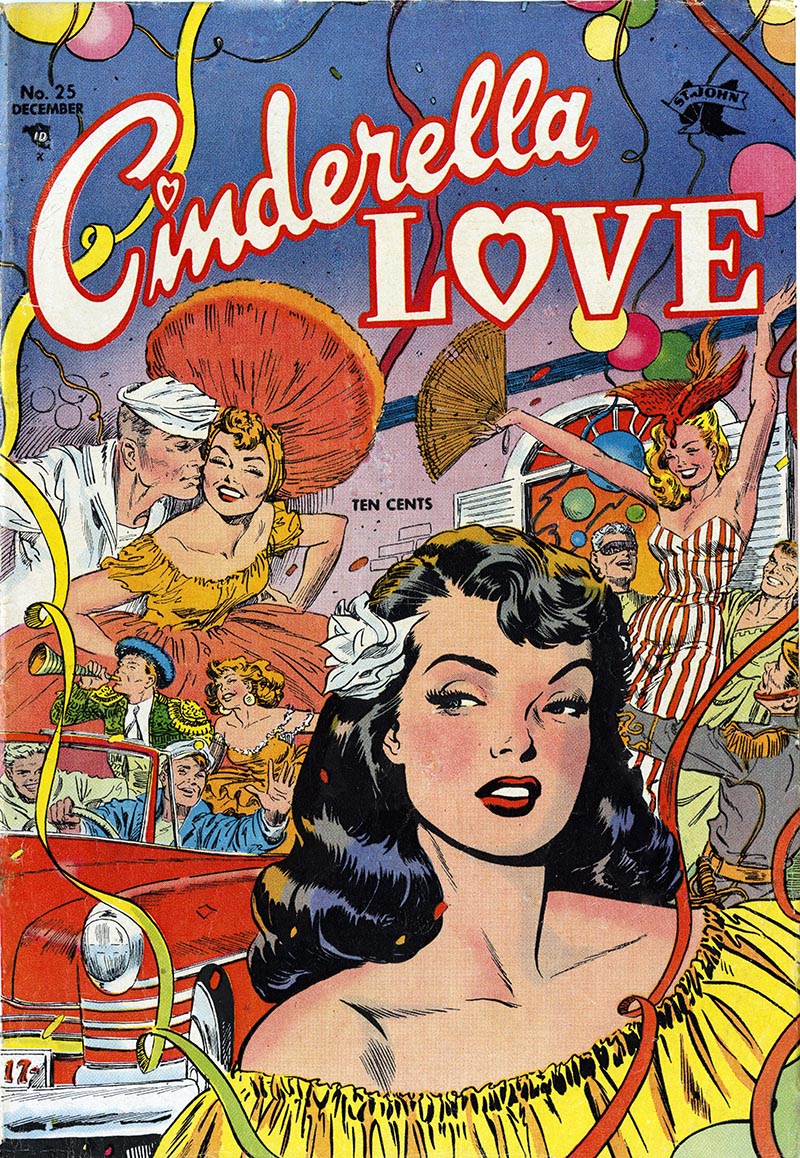
Born on December 10, 1921, in North Carolina but raised in Pittsburgh, Pennsylvania, Baker quickly set his sights for where the action was. Shortly after graduating high school, he moved to Washington, D.C., described by a sibling as a “party town” in those days, but quickly adjusted course for Manhattan, where he knew he could pursue his dreams of earning a living from his art. Once in New York City in the early 1940s, Baker didn’t waste any time making the rounds, quickly landing a spot in the Jerry Iger shop while simultaneously attending night classes at the Cooper Union School of Art and Design. It wasn’t long before he became one of the stars of Iger’s bullpen of artists, working on comics for a variety of the day’s publishers (Fiction House, Fox, etc.) and taking over responsibilities for a multitude of ongoing comics characters. And those characters, perfectly matched to Baker’s skills, were invariably beautiful, spunky heroines with names like Sky Girl, Mysta of the Moon, Buckskin Belle, and Camilla the Jungle Queen. During these years he collaborated with many talented artists, from Al Feldstein to Alex Blum.
Looking at Baker’s art, it shouldn’t come as a surprise that a couple of his avowed artistic heroes were Alex Raymond and Andrew Loomis.
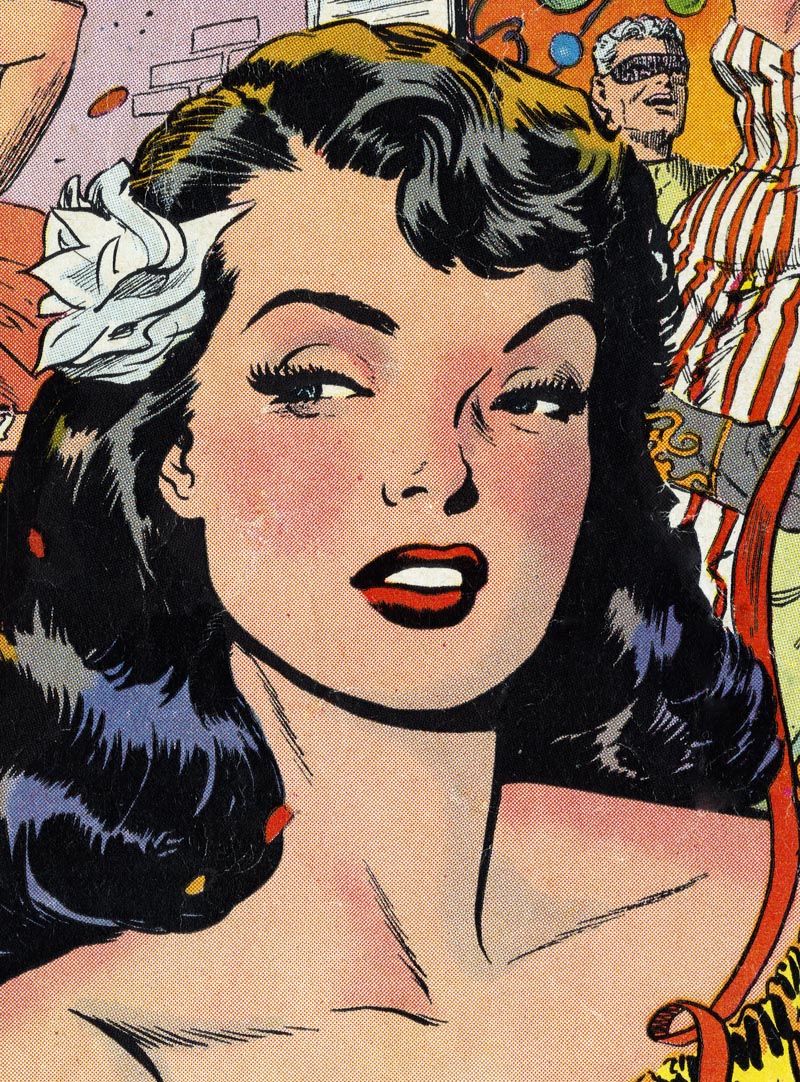
Baker was a night owl, and more than one friend or colleague reminisced about staying up all night with Baker when he was on deadline (which was most all of the time), sitting in his one-bedroom Manhattan apartment as he smoked Camels at the drawing board, listening to jazz on the radio (Billie Holiday was a particular favorite).
The photographic evidence suggests that all of these late nights didn’t seem to take a toll on Baker’s matinee idol looks, a handsomeness only reinforced by his suave sartorial style (another recurring detail in nearly all his friend’s recollections).
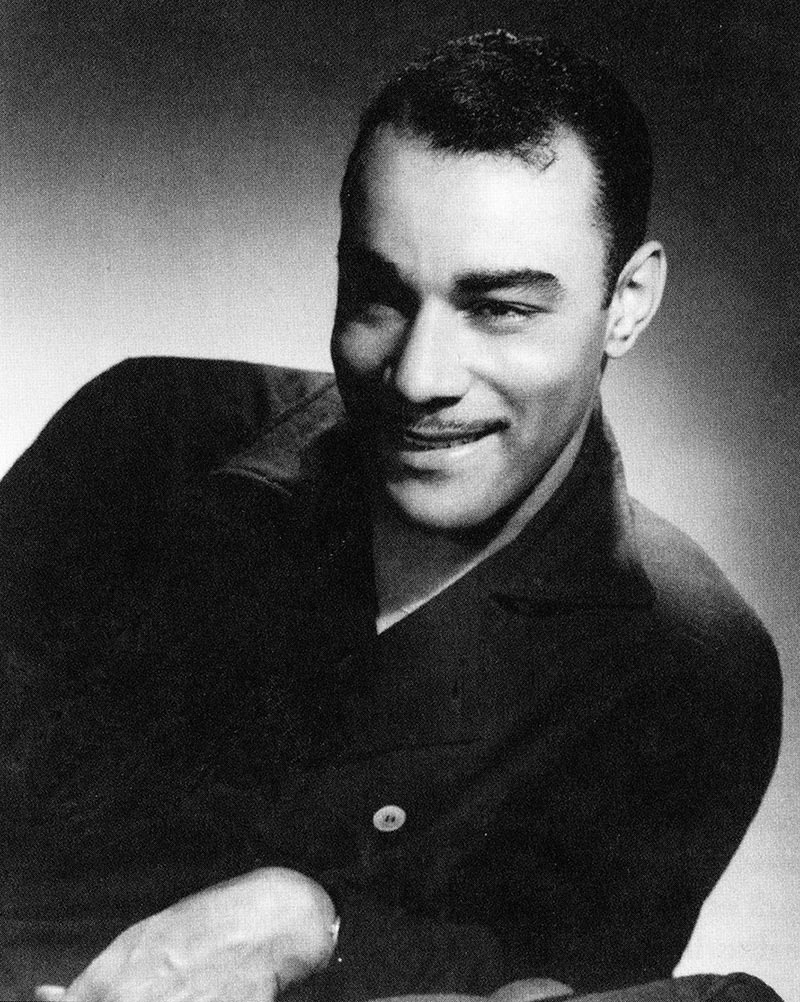
While working in the Iger shop, he was often described as being reserved and taciturn, usually disappearing at lunch times. Being the only black artist in a white studio (and predominantly white industry) probably explains some of this behavior. But those who got to know Baker well, like his good friend and most frequent collaborator Ray Osrin, talk of a wholly different man, one who was charming, the life of the party. Baker’s brothers frequently commented on how funny he was.
Once Baker left the Iger studio and started working for Archer St. John, he produced the work that merits the accolades he continues to receive to this day. From 1948 to early 1954, Baker drew more than 1,000 pages of comics and over 200 covers at a sustained level of quality that’s daunting to contemplate. It was while at St. John that his style became assured and naturalistic, a mature kind of sexy that was never smutty, but rather buoyant, even fun. It was also while at St. John that in 1950 he produced It Rhymes With Lust, a 128-page graphic novel that many scholars argue is the first in the medium’s history.

When Archer St. John’s personal life wrecked his publishing house, Baker was left looking for work in an industry that had already been deeply battered by the Kefauver congressional hearings. Freelance opportunities had dried up, and Baker ignominiously found himself assisting the far lesser but better connected artist, Vince Colletta. Baker died shortly thereafter at age 37 from a heart attack in his sleep on Aug. 11, 1959, missing the comics industry’s renaissance that was just around the corner.
It was during Baker’s prolific St. John years that this master of "good girl" art latched onto one of that publisher’s only recurring characters, Kate of Canteen Kate.
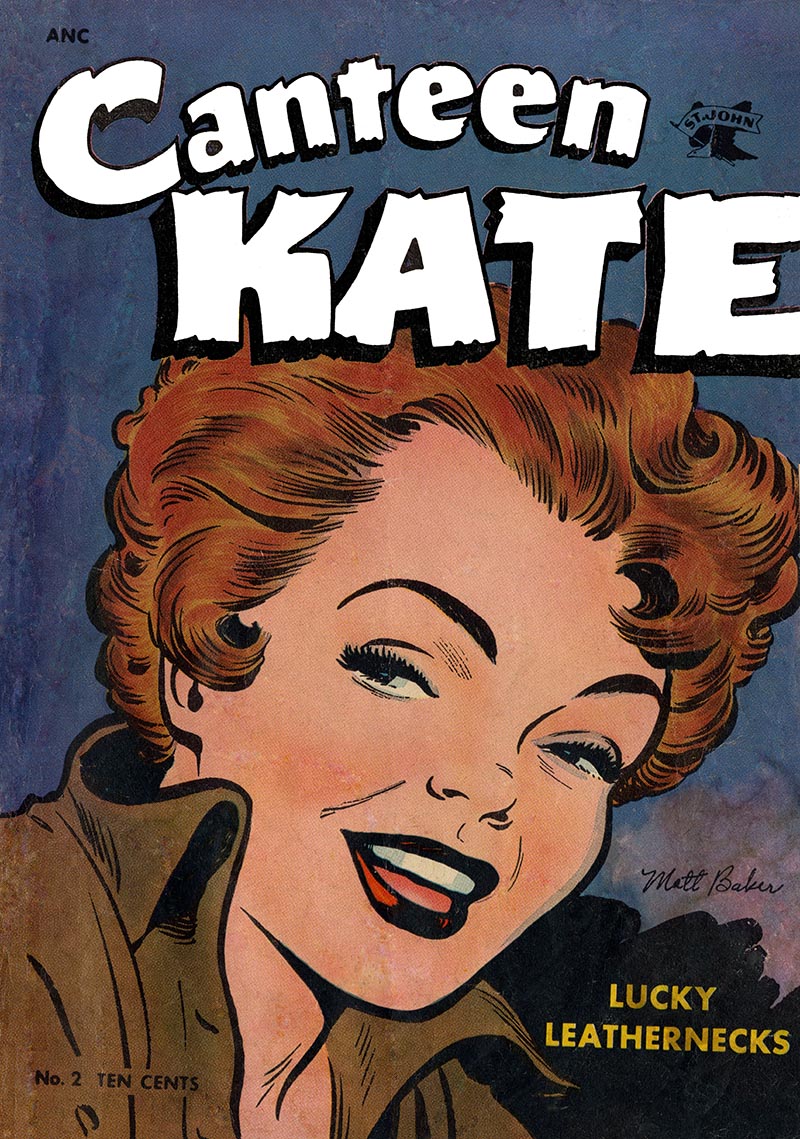
Baker drew every installment of the candid wartime cutie, from her premiere in Fightin’ Marines (1951) to her final bow in Anchors Andrews (1953). Unlike the jingoistic comics typically published during the Korean War, Canteen Kate tales were designed to be morale-boosting screwball fun that centered around her silly hijinks on a military base.
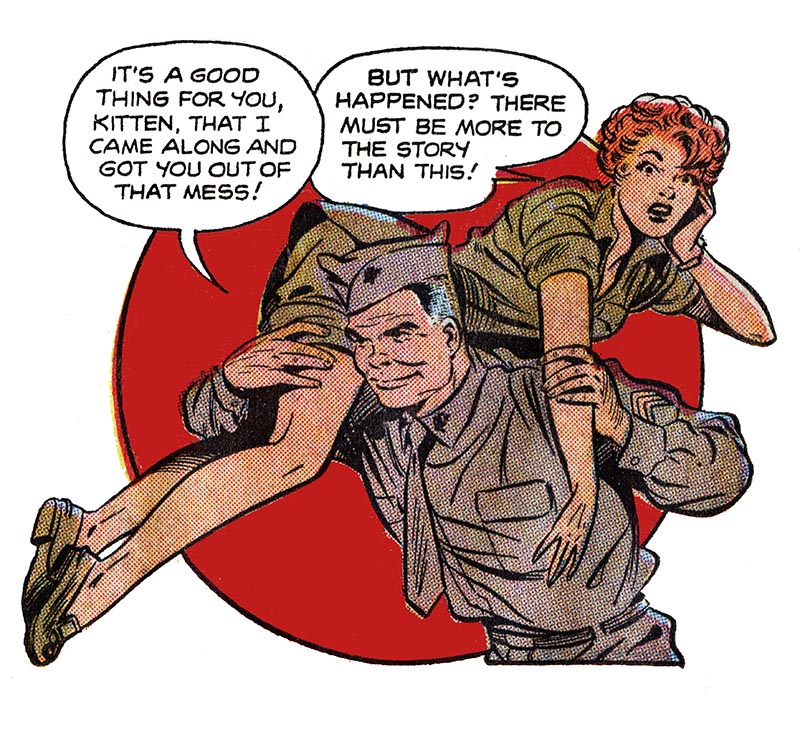
Every Canteen Kate story ever published—22 in all—is collected for the first time in The Lost Art of Matt Baker, the latest volume in the Lost Art Books series.
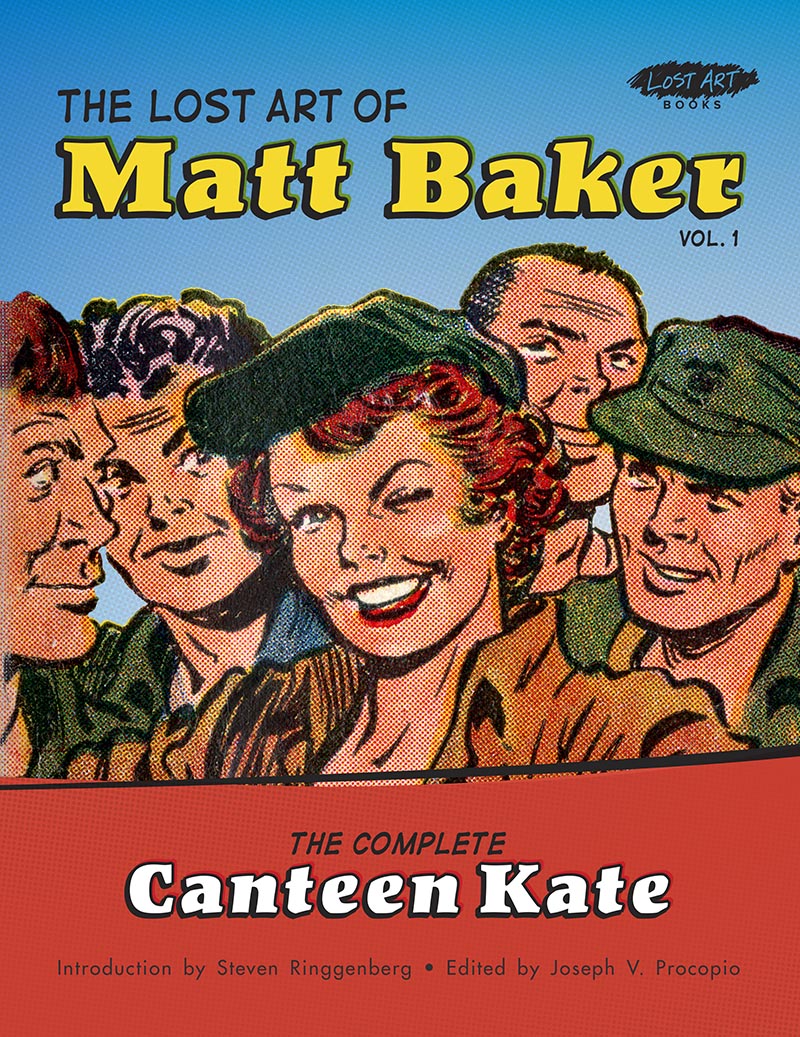
The first in a three volume set devoted to Baker’s St. John work, these comics have been judiciously restored as well as enlarged 20 percent over their original published size.

A rich introduction by veteran comics writer Steven Ringgenberg provides insightful historical and biographical context, and a bonus gallery spotlights Baker’s skills as a cover artist.

Baker might have known his life would be short. One hopes he had an inkling that his art would outlive him for decades.
~ Joseph Procopio
For more information or to purchase, visit LostArtBooks.com
Lost Art of Matt Baker : The Complete Canteen Kate [BOOK] from Joseph Procopio on Vimeo.









Post a Comment